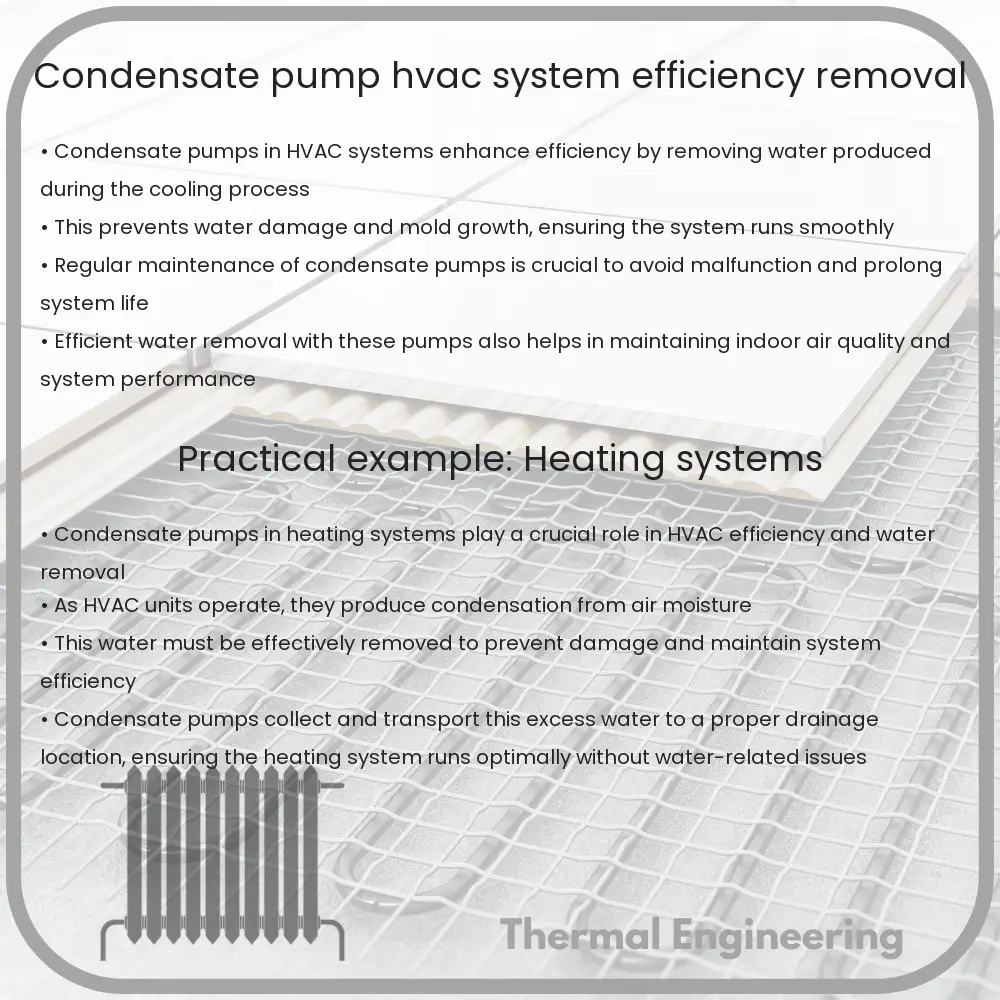Learn about the crucial role of condensate pumps in boosting HVAC system efficiency, importance, and maintenance tips.

Understanding the Role of Condensate Pumps in HVAC System Efficiency
Heating, Ventilation, and Air Conditioning (HVAC) systems are essential components of modern buildings, ensuring comfort and maintaining air quality. An often overlooked but critical component of these systems is the condensate pump. The condensate pump plays a pivotal role in enhancing system efficiency by managing the removal of condensation produced during the heating and cooling processes.
What is a Condensate Pump?
A condensate pump is a specific type of pump used to remove water (condensate) that is generated during the air conditioning, refrigeration, and heating processes. Most commonly found in systems where the condensation cannot be drained by gravity, these pumps collect and transport condensate to a proper drainage area, preventing water accumulation and potential damage in and around HVAC equipment.
How Condensate Pumps Improve HVAC Efficiency
Condensate pumps contribute to HVAC system efficiency in several ways:
- Preventing Water Damage and Corrosion: By efficiently removing condensate, these pumps prevent water from collecting in or around HVAC units, which can lead to corrosion or other damage that might impede system performance.
- Reducing Humidity Levels: Efficient removal of condensate helps in maintaining lower humidity levels in the air-handled spaces. This is particularly important for air conditioning systems during hot weather, improving comfort and reducing the load on the cooling system.
- Enhancing Energy Performance: When condensate removal is not managed properly, HVAC systems can work harder than necessary to achieve desired indoor temperatures, leading to increased energy consumption. Condensate pumps facilitate smoother operation and energy efficiency.
Key Components and Operation of Condensate Pumps
The basic components of a typical condensate pump include:
- The reservoir: Where condensate collects.
- The pump: Which mobilizes the condensate.
- The float switch: Which detects the water level in the reservoir and activates the pump when necessary.
- The check valve: Which prevents the backflow of drained condensate.
Operationally, when the condensate level in the reservoir reaches a set point, the float switch triggers the pump. The pump then expels water through a discharge line that leads to a suitable drain. This cycle repeats as long as the HVAC system is in operation and producing condensate.
Maintenance Tips for Condensate Pumps
Proper maintenance of condensate pumps is essential for ensuring their efficiency and longevity:
- Regular Cleaning: Reservoirs should be cleaned regularly to prevent sludge, mold, and mildew buildup, which can obstruct the pump and lines.
- Inspecting and Testing the Pump and Float Switch: Regular checks will ensure functional reliability and prevent system failures.
- Ensuring Proper Discharge Line Routing: The discharge line should be properly routed and free from kinks and blockages to ensure effective removal of condensate.
Conclusion
In conclusion, while they may seem like minor components in the broader HVAC system architecture, condensate pumps are indispensable for ensuring the system’s efficient and trouble-free operation. By effectively handling condensation, they enhance both the performance and lifespan of HVAC units, contributing to overall energy efficiency and system health. Regular maintenance and timely repairs of these pumps are crucial to maintaining the optimal performance of your HVAC system.